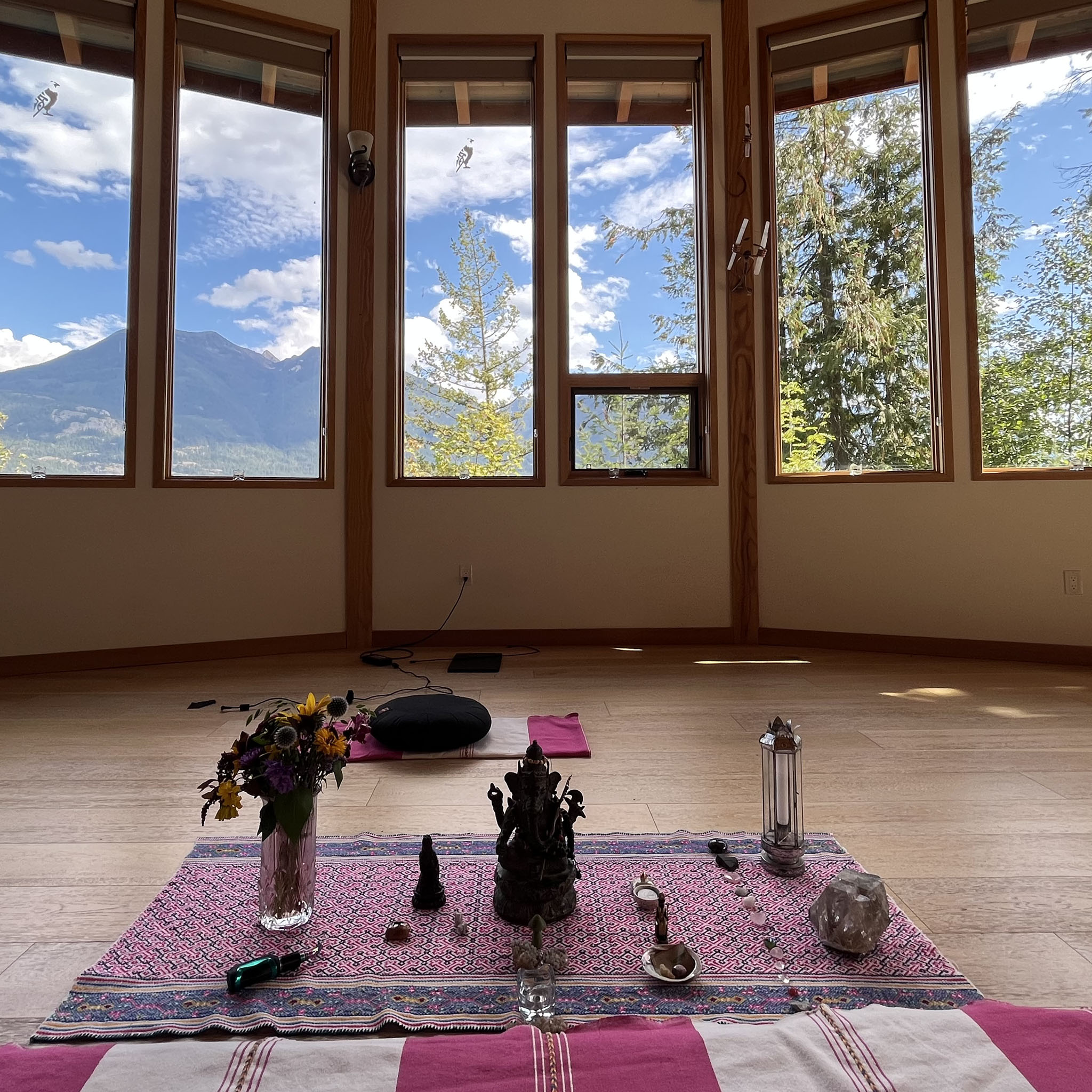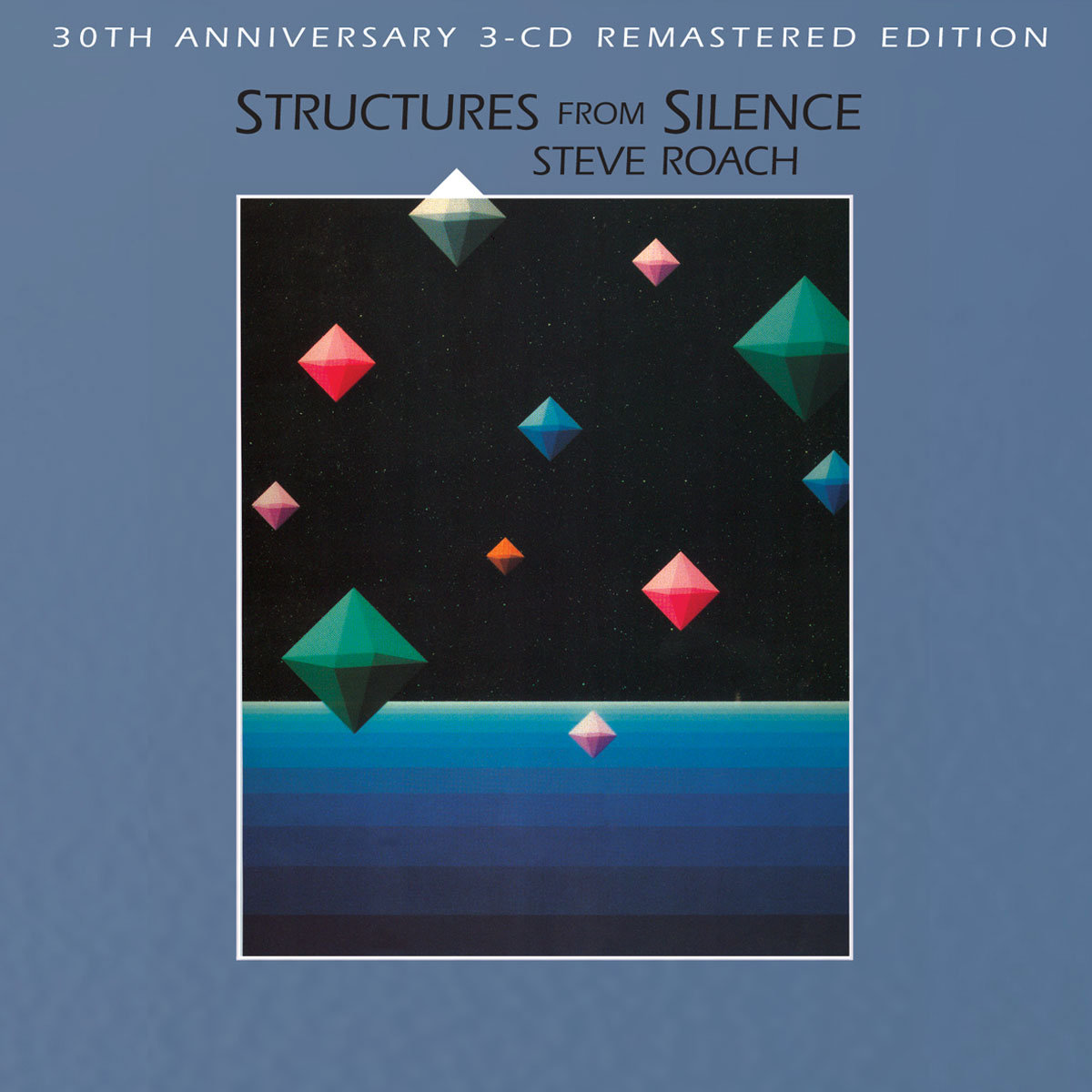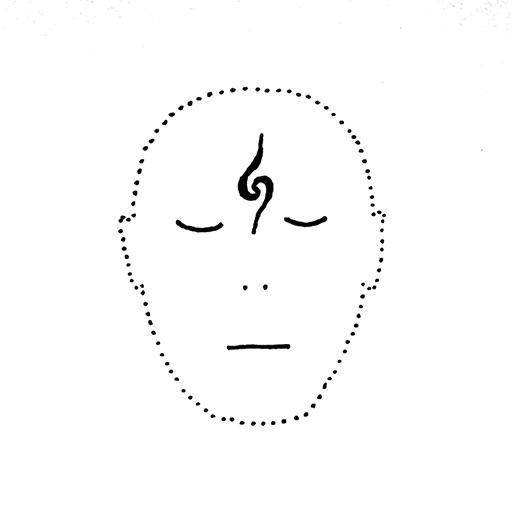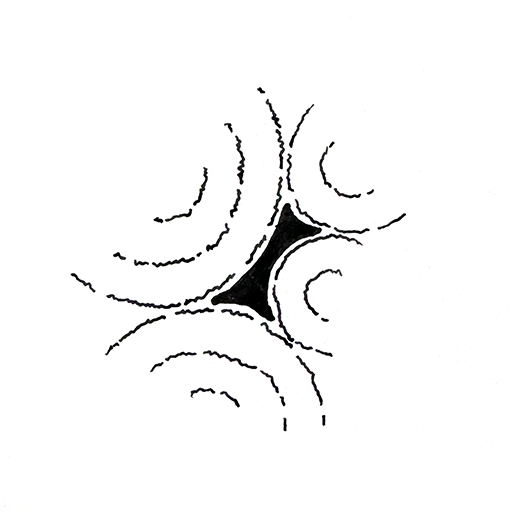Written by Cube Flipper on 8 October 2023.
This post is a contribution to the second Qualia Research Institute psychophysics retreat, which took place from 2 September 2023 to 20 September 2023 in Kaslo, British Columbia, Canada.
Table of contents
The flight into Castlegar was a refreshing change of scenery from where I’d been lurking in Oakland. I often find flying an emotionally fraught affair; this time around, the majesty of the Canadian wilderness left me distraught. Nothing throws the turbulence of human affairs into context quite like the sight of turbulence operating on geologic timescales.
Back in the human realm, Andrés Gómez Emilsson and Hunter Meyer had assembled a multidisciplinary team of qualia researchers: visual artists, psychonauts, software developers, meditators, writers, and even a stray scientist – most of whom had only just met one another for the first time, and the minibus ride out to Kaslo was raucous with much animated discussion of what the next three weeks might have in store.
Why had we gathered in Canada? Collectively, we wish to study consciousness, whatever it may be. As we understand, there are certain substances one can find, which if ingested modify the dynamics of one’s state of consciousness – such that we can study its properties.
We suspect that within the subjective realm there is far more regularity to be found than one might naïvely assume. However, the established scientific tradition favours the objective over the subjective, and with good reason – industrial civilisation is built upon this epistemic foundation. As such, said scientific tradition presently lacks a home for our subjective research paradigm, so in the interim we must establish our own tradition.
One of these substances, 5-MeO-DMT, is a poison found in the glands of a toad, designed to stun or kill predators; but which in small doses if vaporised and inhaled is said to lead to a fifteen-minute trancendental experience. The synthetic version of this is what we were to be experimenting with – and the reason we were going to Canada, given its legal status there. Personally, I was going in mostly cold; I’d only tried a small dose of five once before, so for the most part I had no idea what to expect.

This much I do know: I find myself highly sympathetic to electromagnetic field theories of consciousness, in which consciousness and the electromagnetic field are one and the same. To this, Andrés would add that what it feels like to be you – well, what it feels like to be your phenomenal fields – is what it feels like to be a topological segment within the electromagnetic field, somewhere inside your brain.
These phenomenal fields must have their state maintained by a control signal somehow, or else your subjective experience would be devoid of sensory qualia – it might instead be quite smooth. One theory about how psychedelics work is that they interrupt this control signal at regular intervals, opening brief windows during which the field can evolve under its own dynamics. We might observe the consequences of this as visual and somatic distortions – like tracers and body load – and by studying these phenomena we might then make inferences about the properties of consciousness itself.
This might sound like a long inferential chain, but in my subjective experience the tendency of psychedelics to reveal phenomena which only seem possible if they were embedded in a field-like substrate – like extrafoveal symmetry propagation – counts in its favour. Yet this might still sound like I’m saying: uhh, just do drugs, you’ll like totally get it, man. Which is true on some level. But the Qualia Research Institute has been investigating all this for some time, and is developing tools for extracting the properties of these phenomena in a procedural manner.
One such tool is the tracer tool, a simple web application which displays two bouncing balls side-by-side, with an artificial tracer rendered behind the ball on the left – I recommend checking it out. If a subject observes a psychedelic tracer behind the ball on the right, they might adjust the properties for the artificial tracer on the left – like trail intensity and strobe frequency – so as to record its qualities. And lo and behold, the tracers corresponding to different psychedelics exhibit different strobing frequencies – for instance, subjects on LSD reliably observe a 15 Hz strobe! This was to be one such experiment we would run while at the retreat.
The retreat center itself occupied a serene location on the west side of Kootenay Lake, whose cold, clear water made me regret that I’d forgotten to pack my mask and snorkel. Upon arrival, we were greeted by our gracious hosts, Richard and Gillian, to whom I feel immense gratitude for helping facilitate our research initiative.

We inspected a circular building known as the Maloca, which was to be our research setting. This contained a large mat with ritual sacraments, beautiful exposed rafters, expansive windows looking out over the lake, and large copper coils positioned at strategic locations for some inscrutable purpose. Over the next few weeks, I would often find myself lying flat on my back, staring upwards at the long thick coil wrapped around the center pole, puzzling over what electromagnetic properties it might conceivably have – and at one point, I even recruited our visiting physicist to help me understand how the presence of inductor coils might influence local electromagnetic radiation.
For if I encounter something which I don’t understand, I’m going to do my best to steelman – or, at least, copperman – why it exists. And this is the spirit which I hope to bring to all phenomena which I might encounter. But, hey, maybe copper’s just cheap in British Columbia. I couldn’t help but notice how big the mining industry is, there.

Research report
I’ll write up a handful of trip reports from the several sessions I participated in, which should hopefully capture the spirit of our sometimes freewheeling research practices.
I was acutely aware that use of five was not without its risks, and I feel compelled to acknowledge the conservative approach which I generally take with such experimentation. As I have said elsewhere:
I am of the belief that a shallow-first approach is the appropriate way to study the effects of psychedelics, distributing intensity of experiences according to a power law. My intent is not to chase a high-intensity experience every time, as I consider it more practical to study the phenomenology as it progresses from a to b to c than if I were to leap straight from α to ω. So the majority of my experimentation concerns smaller dosages.
This said, my previous experiences with DMT had been reliably wholesome, and this gave me some amount of confidence with regards to five.
Terminology
If it is unclear what I might mean by the terms phenomenal fields, somatic field, or visual field, I can refer the reader to an earlier post: An informal review of anthropic qualia states.
Prerequisites
In hindsight, I was less prepared than I thought, and there were a number of things which it was worthwhile to understand in order to get the most out of five. This is the advice which I would have given myself beforehand:
- You will have a variety of experiences – some of negative, neutral, and positive valence.
- If you experience something negative, don’t resist it, just douse it with equanimity.
- The only mental move is expansion.
- The most straightforward way to avoid developing unpleasant patterns of contraction is to simply maintain expanded awareness.
- You are not the patterns of contraction, nor are you the patterns of expansion. You can identify with either, or both, depending on where you place your attention.
At the retreat, we were also introduced to a number of concepts from vector calculus as well as vector field topology:
- From vector calculus, you should understand the gradient, divergence, and curl.
- From vector field topology, you should understand attractors, saddle points, and repellors; as well as critical points and separatrices.
This terminology meant that we shared a common language, and we began using these concepts to discuss things that we’d seen and felt on five, as well as to inform the replications that our visual artists were producing. As a trivial example, vector calculus allows us to put a precise definition on the otherwise nebulous concepts of expansion and contraction:
- Expansion: regions where the divergence is greater than zero.
- Contraction: regions where the divergence is less than zero.
This is important, because this class of phenomena are exactly the class of phenomena which present themselves on five – because what five tends to do is smooth out the phenomenal fields, leaving any remaining topographic and topological deviations isolated against a blank canvas. This facilitates their study; and by study of these, we hope, we can make inferences about the dynamics of the fields themselves.
6 September 2023 — Second session
We assembled in the Maloca for our second session with the full group, where we’d each take turns to enter the five state. We had several laptops arranged within view of the mat, running various psychophysics experiments – but, we’d mutually acknowledged, the participant was under no explicit obligation to engage with them if they judged that this would cause discomfort.
One of these experiments, of course, was the aforementioned tracer tool. Uniquely out of the serotonergic psychedelics, five does not seem to induce any strobing effects when the tracer tool is viewed – at least, according to anonymous reports, which we intended to verify in a more formal setting. Instead, it tends to leave very smooth blue tracers behind the ball.
Perhaps, if the phenomenal fields do in fact have a refresh rate, this would indicate that five is interrupting it in a way that’s perfectly phase-locked? From Andrés’ writeup, 5-MeO-DMT vs. N,N-DMT: The 9 Lenses:
Phenomenologically, it seems that the vibratory signature of DMT doesn’t wrap around your experience an integer number of times. Thus, what we will call, for lack of a better term, the qualia crystals that form while on DMT seem to be inherently unstable and alien to your normal way of cogitating. The fact that the vibrations don’t fit perfectly in one’s experiential field forces it to bend out of shape to accommodate such vibrations. The result is constant chaos – fluid instabilities as the core effect.
On the other hand, with 5-MeO-DMT, it’s as if the vibration activates parts of the field of experience in exactly the right way for them to blend, unite, and resonate with one another. The vibrations fit perfectly inside one’s experiential field, and allows it to relax into its own natural shape. And this allows for perfect crystals of awareness to peacefully grow, multiply, and synchronize.
With that said, it is worth mentioning that 5-MeO-DMT is probably not hitting the right frequencies merely by chance. It’s probably more that it is activating a system whose attractor is self-correcting and results in the kind of symmetrical crystallization that gives rise to deep feelings of bliss.
Contra expectations of bliss states, my introductory experience with five the day beforehand had been somewhat jarring and uncomfortable – but, you know, sample size one, so I remained optimistic.
I sat cross-legged and hit the vape. It hit fast. I took a moment to take in the scenery before me. Eyes open, the effect of five is quite challenging to describe – it’s not like other psychedelics, there’s not much in the way of phenomena like symmetry propagation, for instance. In fact, it’s barely psychedelic at all, in the popular aesthetic sense. Other than some slight, colourful ringing artifacts, it mainly just seems to coat the entire world in a subtle film grain effect – but I had a strong sense that there was something more to it than that.
I had enough time to look down at the laptops and gesture to Andrés, indicating, yes – I see blue tracers – before I allowed myself to fall back into a lying position. I closed my eyes and sighed with relief, because this wasn’t like last time.
This time, I think I hit some kind of higher resonance (whatever that means), because everything felt finer, smoother, creamier – and obviously following a positive trajectory. Extremely high frequency buzzing sensations raced across my skin, themselves cohering into greater and greater patches of synchrony as time went on – and the visuals were similar in nature, splotches of cream and chocolate slowly tumbling over one another. I felt like a White Russian being mixed together.
It was certainly blissful, but emotionally – I can be quite self-conscious by nature, and even knowing how accepting my audience was, I think I found it challenging to truly let go with everyone looking on. This would have required a lot of disinhibited squirming around in ecstasy, I suspect.
I remained nonverbal for a little while afterwards. It occurred to me that the less entropic the experience, the less there should be to say about it.
14 September 2023 — Fifth session
At this stage, we’d iterated on the structure for our proceedings somewhat – rather than holding larger, more formal group sessions, we were now free to book out the Maloca for more informal sessions individually or in small groups.
Personally, I’d had some trouble getting five to produce a positive experience – and several other participants had found it to be something of a roll of the dice, too. 4-AcO-DMT is a psilocin prodrug which is legal in Canada. Myself and Asher had booked a session for this afternoon with the intention of also taking some four, in order to evaluate whether this would provide a kind of vibe safety net from which we could explore five.
We both took 20 mg of four and waited about an hour for it to come up. I’d say it felt like the equivalent of 2 g of mushrooms, but with a far cleaner headspace and none of the nausea. My impression afterwards was that it really didn’t seem to change the phenomenal character of five very much – it just guaranteed a return to a positive headspace afterwards.

Expansion and contraction
I think this was the session where I finally started to get the hang of it. This said – I took my first hit on the vape, let the initial turbulence settle – and then promptly developed a vortex-shaped pattern of contraction between my eyes.
However, when confronted with an unpleasant stimulus, my instinct is to study its nature, and I think I derived more insight into my raw phenomenology from a couple of minutes sitting with my discomfort than I did at any other time during the retreat.
A typical thing that would happen to me on five would be that I’d feel some three-dimensional phenomenon in my somatic field, and then see a two-dimensional version of it projected onto my visual field – generally dark grey on an empty light grey background. This is quite handy, because it makes it very easy to inspect whatever’s going on. In this case, I simultaneously watched and felt this thing swirl around inside my head, and realised that by focusing my attention on it I was only entrenching it.

I’d been introduced to the idea that the only mental move is expansion by Andrés and Roger only a couple of days beforehand, and suddenly I had a first hand appreciation of what this meant. This pattern of contraction was actually just a focal point between adjacent wavefronts of expansion! In the five state, this was a rather profound foreground-background inversion – I was no longer the unpleasant sensation, but instead I was also the waves of expansion around it. Having come to this realisation, I was able to relax my attention – and this somatic cyclone began to dissipate, before ultimately blowing away to the periphery.
Symbolic and non-symbolic communication
The next run was more productive. I expanded, I expanded until I filled the bounds of my visual field – its perimeter limned by iridescent filaments twisting past one another like the corona of a grey sun.
On the come-up, I observed a stray thought pass like a dark sunspot across my ashen photosphere. Thoughts are bad, so I reflexively swept it away; but not before I caught an accurate view of its shape. I felt its nature, its wordiness; and within its depths, I sensed a swathe of mental imagery, threatening to erupt like a solar flare. It was truly not dissimilar to what I’d experienced on the previous run, only this particular pattern of contraction came with a semantic payload.

While I was still feeling the afterglow, Asher proposed an experiment. He suggested that we spend a period of time using grunting sounds to communicate with one another non-symbolically – before switching back to symbolic speech patterns. I didn’t understand what their intention was, I just went along with it – which may or may not have helped avoid priming effects.
After a period of conversation conducted entirely without words, we segued back into our usual joking around – and the subjective difference was striking. We often made use of voice recordings for future reference – the following transcript should provide our impressions at the time:
Asher: …aw, yeah, that’s a total jad doke. Dad joke. Jad doke.
Cube Flipper: Jad doke. You’re going to be telling jad dokes in the hot pond later.
Asher: Jad dokes in the hot pond!
Asher: See, this is the kind of playful use of language that I’m totally here for.
Cube Flipper: Words aren’t real. Words are also extremely real.
Cube Flipper: I’m beginning to think about the spontaneous process by which words arise. It feels like a very whole-system thing. It’s almost holographic, projected from the boundaries of the system. It’s like those wave pool things, where you can control where a standing wave arises. And for a lot of people, I think they tend to only arise in one place, like in the head.
Cube Flipper: And it’s actually just, like, regions of expansion expanding in a non-uniform way, such that they cause those little imperfections to arise.
Cube Flipper: I have shapes in my head.
Asher: I can resonate. I was getting a real strong sense, just before, when we were making noises – it really feels like I’m conjuring mind objects. It feels like I’m performing a wizardly spell, in the space of my awareness. I’m conjuring something.
I now understood the purpose of his experiment. By switching between modes of communication, we were able to compare the patterns of contraction generated by pure vocalisation and the patterns of contraction generated by vocalisation with semantic content attached. We both gained a visceral appreciation for how smooth and resonant the shapes generated by non-symbolic vocalisation were, and how tight and wrinkly symbolic speech was, by comparison.
At least, mine were wrinkly – like the creases that form in a vacuum sealed bag. Asher’s a bit more precise with his language than I am – maybe his mind objects are more geometric and crystalline?
After we wound down for the day, we went for dinner, and related our experience to the rest of the team:
Asher: Cube was just kinda chilling, holding space for me, and I was going into 5-MeO in a kind of playful way. I was like, I’m gonna make non-symbolic sounds, and I want you to match the sounds with the same kind of richness within the information content of the sound.
Asher: We can do it now. Hmm?
Cube Flipper: Mmh.
Asher: Engh?
Cube Flipper: Ngeh.
Asher: Like that kind of one-two-one-two, and conveying emotion and communicating without using words. And I was kind of sipping on the 5-MeO as we were doing this exercise. It was really profound, because so much emotion could actually be conveyed.
Cube Flipper: Without being symbolic, you’ve gotta be careful when doing this, like one of us said, uh-uh! at one point, that’s clearly, like, negatory, you know, something to do with the difference between those tones…
Cube Flipper: There’s also, like, the cat meow noise attractor.
The Teafaerie: Meow.
Cube Flipper: You know when people walk around just like talking to each other in cat voices, that’s a big attractor within this space, you want to avoid that.
Asher: There was also the sense in which it felt like I was conjuring a mental object, I was waving a wand, or I was blowing reification into these sound qualia, you know? I was giving them meaning. And then they had this shape, in my experience.
Cube Flipper: I had a real visceral sense afterwards, when finally using symbolic language again, just what an – encrinkling? – it is, by comparison.
Cube Flipper: Oh my god. I wasn’t even on five. It’s just like, okay, I got a feel for this, now.
Asher: And then it hardens into this structure.
Cube Flipper: Yeah. They’ve got a persistent structure, self-reinforcing.
Cube Flipper: Something, something, non-linearities. Field saturation. I still don’t really know what the non-linearities even are. But they’re in there.
I don’t know – a couple of bright-eyed trippers figure out the emptiness of language and that words are actually shapes. Mind-blowing stuff. What do we do with this?
Could we replicate this experience reliably? Would it be worthwhile for us to sit with pen and paper, alternating between sipping on the vapes and sketching out our mind objects for all the words in the Swadesh list?
Is this a distraction? Analysing the nature of thought itself sure sounds compelling, but personally I’m interested in more granular, more raw phenomenology. Our field remains largely unexplored, and the size of our team means we must leave many low-hanging fruit on the vine – and there they remain, just waiting for future qualia researchers to come along and pick them.
Departure
As all things must do, our three weeks together eventually came to a close. We come from all corners of the globe, and it’s pretty rare for us to share space with one another – our gathering had been both immensely valuable and immensely entertaining. I knew I would miss everyone tremendously. Most of us flew together from Castlegar to Vancouver, and from there we went our separate ways.
I will confess to having arrived in Canada skeptical about the research utility of five. I am used to working with DMT, which has a reputation for divergent behaviour – whereas five is well-known for engendering highly convergent states of consciousness – what could be in there for me to study?
I have had to expand my worldview. I think I’ve always been attracted to DMT because it makes me feel like a naturalist in the jungle, overwhelmed by biodiversity. What radical new psychofauna might I discover this time? By comparison, working with five feels more like lab research than field research. It makes me feel like one of those early physicists who tinkered with electromagnetism, striving to find order in the mysterious forces just beyond their control.
Electrification transformed society, this much we do know. Might we see similar transformations once consciousness studies are well established? Who can say. I can’t wait to find out.
Citation
For attribution, please cite this work as:
APA
Flipper (2023, October 8). The second QRI psychophysics retreat: 5-MeO-DMT. https://heart.qri.org/retreats/2023-canada/cube-flipper/the-second-qri-psychophysics-retreat.html
BibTeX
@misc{flipper2023canada,
author = {Flipper, Cube},
title = {The second QRI psychophysics retreat: 5-MeO-DMT},
url = {https://heart.qri.org/retreats/2023-canada/cube-flipper/the-second-qri-psychophysics-retreat.html},
year = {2023}
}